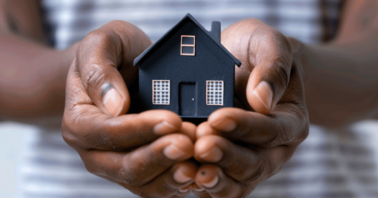Nairobi’s esteemed Karen neighborhood has long been a beacon of affluence and elegance, attracting discerning homeowners seeking a blend of urban sophistication and natural serenity.
Named after Karen Blixen, the Danish author of “Out of Africa,” this area bears witness to a rich history deeply intertwined with Kenya’s colonial past. Initially planned to be a sanctuary of leafy suburbs for white settlers during the colonial era, Karen’s landscape has transformed dramatically over the years.
READ ALSO: Expat Life in Kenya: Neighborhoods
Table of Contents
Uncontrolled Development in Karen
The once strictly planned residential area, characterized by spacious bungalows set on large plots, has experienced a surge in growth. This transformation has seen the demolition of traditional homes to make way for office parks and apartment complexes.
In an article by The Standard, The Karen Langata District Association (KLDA) expressed concern over the uncontrolled sub-division of land in Karen, leading to a loss of its peaceful ambiance, a decline in land value, and heightened security concerns.
Developments in areas like Miotoni, Bogani, Karen Plains, Mokoyeti West Road, and Karen Centre have been particularly affected. Despite these challenges, Karen remains an attractive neighborhood, primarily due to its proximity to the Central Business District (CBD) and functional infrastructure, making it a sought-after location for property investment.
READ ALSO: Century-Old Nairobi Residence on the Verge of Auction in Karen
Maggie Macharia, a seasoned real estate agent specializing in residential sales in Karen, noted in an article in the Business Daily that most sellers are couples in their retirement age. Their children have flown the nest.
They seek a more manageable living situation and are enticed by the evolving allure of Karen. As the neighborhood experiences continued development and popularity, homeowners are increasingly open to exploring life outside the bustling city.
Rezoning and Mixed-Use Developments
In contrast, other affluent neighborhoods in Nairobi, like Kilimani, Kileleshwa, Loresho, and Lavington, have also experienced significant shifts in recent years.
The rezoning of areas previously designated as strictly residential has led to a surge in mixed-use developments. This has impacted the once serene and tranquil nature of these neighborhoods, with bungalows being replaced by office spaces and apartments.
The growth of Nairobi, driven by economic forces and a burgeoning population, has inevitably influenced the posh estates bordering the Central Business District. The demand for mixed-use developments has prompted city planners to re-zone areas, resulting in a blend of residential housing, shopping malls, and office spaces.
Despite the economic benefits, these changes have been met with mixed sentiments, with some residents lamenting the loss of the neighborhoods’ original charm and tranquility.
For those bidding farewell to their expansive Karen residences, the allure of Champagne Ridge in Kajiado, Tigoni in Kiambu, and Maanzoni in Machakos beckon. These locales offer a refreshing change of pace, providing a serene backdrop for the next chapter of their lives.
Others are drawn towards the tranquility of Nanyuki, Naivasha, or the coastal gems of Kilifi, Watamu, and Lamu, as noted by Tarquin Gross of Knight Frank.
READ ALSO: Top 5 Upcoming Areas in Kenya
Diverse Housing Market
In the Karen neighborhood of Nairobi, the real estate market exhibits a diverse range of property prices. Apartments come in various sizes, with one-bedroom units averaging around Ksh 6.5 million, while larger options like three-bedroom apartments command prices of approximately Ksh 15 million. Four-bedroom apartments represent the upper end of the market, with an average cost of Ksh 20 million.
Townhouses, which are a more popular option in Karen, offer even more spacious living, with two-bedroom options averaging at Ksh 55 million, and four-bedroom residences at an average cost of Ksh 80 million.
In terms of rental properties, the market is equally dynamic. One-bedroom apartments can be found for approximately Ksh 55,000 per month, while larger two-bedroom units may command rents of around Ksh 80,000 monthly. Three-bedroom apartments are in higher demand and thus come with an average monthly rental cost of Ksh 120,000.
While homeownership remains a cherished goal, the rental market in Karen thrives, with tenants seeking spaces in coveted areas like Marula Lane, Bogani Road, Ndege Road, and Hardy. Expatriates gravitate towards the neighboring communities of Muthaiga and Gigiri, drawn by the proximity to UN offices and foreign embassies.
Supply and Demand Dynamics in Karen
Additionally, supply is on the rise, increasing by 9% month over month, reflecting a healthy and active market. Moreover, demand has also seen a positive trend, rising by 5% month over month, indicating sustained interest from potential buyers and renters.
This data, based on the past year’s performance on BuyRentKenya (from August 2022 to August 2023), it showcases the vibrancy and attractiveness of the Karen real estate market.
In conclusion, Nairobi’s Karen neighborhood, steeped in history and prestige, continues to evolve in response to shifting homeowner preferences. As older, wealthier Kenyans seek cozier and more manageable spaces, Karen adapts to meet these changing needs while retaining its allure as a prime location for property investment.
The transformation of other affluent neighborhoods in Nairobi further underscores the dynamic nature of the city’s real estate landscape. Despite the challenges posed by rapid development, these neighborhoods remain integral to Nairobi’s identity, reflecting both its colonial past and its vibrant future.
READ ALSO: Schools in Karen



